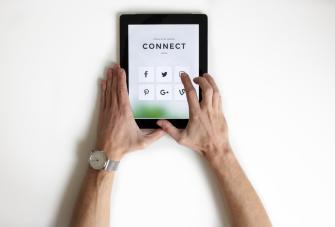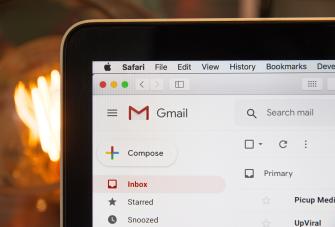Which Brand Personality Archetype Does Your Business Fit?
Adopting authentic, meaningful branding can completely transform the prosperity of a business. Consistent, recognisable branding accounts for a 33% increase in revenue for some companies [1].
Your business’s personality is formed through your brand values, communication style, and approach to customer service. It’s also influenced by your branding and identity - your logo, colour palette, language, advertising style, and online presence.
How customers perceive your business personality will ultimately help them decide whether or not they choose to shop with you and recommend you to others.
There are 12 brand personality archetypes, each with their own emotions and motivations. Understanding these archetypes will help you understand where your brand fits in the market.
Emotions that fuel brand archetypes
Swiss psychologist Carl Jung created the concept of these archetypes when studying human behaviour and communication patterns in 1919. Nowadays, Jungian archetypes are commonly applied to businesses. Just like people, brands are thought to have recognisable and predictable personality traits and communication styles.
All businesses are built with the same basic structure: supply and demand. The development of personalities behind all companies works in exactly the same way. The 12 archetypes that brands adopt are a consequence of customers’ emotional needs.
Four motivational categories
To simplify the process of identifying your brand personality, archetypes can be divided into four categories based on brand motivation. The four motivations are: to provide structure, to connect with others, to connect with self, and to create a legacy.
Motivated to create structure
The Caregiver
Emotional need: Service
Examples: Johnson and Johnson, Heinz, St John’s Ambulance, Dettol, Jury’s Inn
Brands that fit the caregiver archetype are motivated by the need to make people feel safe, protected, cared for, and encourage their customers to undertake self-care using their products.
Caregiver brands want to educate and provide aid, education, and support to consumers. Common niche markets that caregiver brands dominate include baby products, cleaning products for home and body, or charities.
They are associated with feelings of home and nostalgia, safety, nurturing, and calmness. Caregiver archetypes are known to target parents, women, and compassionate individuals in general.
The Ruler
Emotional need: Control
Examples: Rolex, Mercedes Benz, Emirates, Chanel, Grey Goose Vodka
Ruler archetypes want to empower their customers by reminding them to channel their inner strength and control. Rulers want to motivate others to be powerful, dominant authorities.
There is a drive for success, wealth, and prosperity from ruler brands, who target people who share these goals in life.
They are synonymous with affluence, those in leadership positions, people with high social and financial status, and those considered the best of the best. In terms of people, think Barack Obama and Beyoncé Knowles-Carter [2]. Many luxury, high-end brands fit the ruler archetype.
The Creator
Emotional need: Innovation
Examples: Apple, Pinterest, Lego, Nintendo, YouTube
The Creator archetype is geared towards people who are imaginative, creative and think outside the box. Lego famously markets their products towards ‘kids of all ages’, a common marketing strategy among Creator brands. They are visionaries who enjoy every step of the creative process. Thinking, planning, and building are just as important as the final outcome with Creator products.
Creators' typical products include planning and building products or apps, games consoles and other electronic devices, and resources that provide information or insight.
They encourage people to embrace the trial and error process, to be artistic and inventive, and most importantly, to get in touch with their inner child - another Jungian concept.
These brands are synonymous with feelings of inspiration, youth, and ambition.
Motivated to connect with others
The Lover
Emotional need: Intimacy
Examples: Dior, Alfa Romeo, Häagen-Dazs, Lindor, Hilton
Like Ruler brands, Lover archetypes are known for being luxurious and high-end. Other words you can associate with Lover brands include opulence, elegance, and romance.
They empower people to feel good about themselves. They produce attractive products that target attractive people. Lover brands have a certain je ne sais quoi rooted in memorable experiences that only their products can provide.
These brands want consumers to feel good about themselves, to feel special and worth the price of these commodities. There are more affordable brands available, but people should choose Lover brands for the experience they provide.
Lover brands often sell premium perfume, cosmetics, and special, ‘treat’ foods, such as luxury chocolate or ice cream.
The Jester
Emotional need: Enjoyment
Examples: GoCompare, M&Ms, Ben & Jerry’s, Foster’s, Skittles
Jester branding is fun, lighthearted, and laid back. Jester brands also encourage the customer’s ‘inner child’, but welcome everyone to participate in what they have to offer. Beer brands, such as Foster’s and Budwiser, often use Jester branding, as do confectionary brands. There is a tone of silliness, often geared towards children or fun-loving adults who want to have a good time.
These brands are motivated by encouraging people to feel comfortable about themselves and refrain from stress or propriety. The persona behind most Jester brands could be pictured saying, “everything will be alright” in the face of chaos. These brands want to become synonymous with exciting and enjoyable experiences.
The Everyman
Emotional need: Belonging
Examples: Vodafone, Volkswagen, McCain, Tesco, IKEA
The Everyman branding strategy is exactly what it says on the tin. These are brands that appeal to the everyday individual to fulfill their everyday needs. The archetype projects stability, dependability, and honesty. There is never any pretentiousness with Everyman brands. They understand the needs of their customers and the reality of daily life because it is their reality too; Everyman brands seek to be on the same level as customers.
Everyman brands wish to satisfy basic needs with one predictable product and service. This doesn’t mean that Everyman products are cheap or below standard; rather, they’re straightforward, simple but effective, with no frills or embellishments.
Motivated to connect with self
The Innocent
Emotional need: Safety
Examples: Dove, Fair Trade, Herbal Essences, McDonald’s, Andrex
Innocent brands communicate with friendly, welcoming messaging that appeals to people’s soft sides. They are similar to Caregiver brands in that they inspire feelings of safety and care. They particularly appeal to families. Their target audiences are extremely broad, as they endeavor to promote themselves as honest, optimistic, and of course, innocent.
There is an affinity with nature and returning to your roots. Transparency and having a fair production chain are very important to this archetype and its supporters. Innocent archetypes want customers to feel comforted. They also want to show people that they give back and genuinely care for their consumers and employees.
The Sage
Emotional need: Understanding
Examples: Google, BBC, TED, Discovery Channel, TripAdvisor
The Sage archetypes are knowledgeable, informative, and reliable. They are often news outlets, serious documentary producers, or services that inform people about nature and science. Think Morgan Freeman, Tim Cook, and David Attenborough.
Sage brands appeal to analytical, confident, independent thinkers. They want people to feel that they are continually learning when they interact with their brand by imparting wisdom and sharing reliable and 100% trustworthy information. They are the teacher, the expert advisor, the wise old man.
The Explorer
Emotional need: Freedom
Examples: Persil, NASA, The NorthFace, Starbucks, Patagonia
The Explorer archetypes appeal to free thinkers, those with a sense of adventure and a desire to explore the world. Similarly to Sage archetypes, Explorer brands appeal to those who love to learn and discover new information. The main difference is that there is more room for mistakes, and the learning process is a crucial part of the journey - like with Creator brands.
Typical markets where Explorer brands can be found are sports equipment and activewear brands, and fields that endorse going outdoors and living life to the fullest through exciting activities. Persil shows this element of their personality through their slogan, “Dirt is good.”
The Explorer is motivated by helping their customers feel that life has no limits, to give customers the support they need to excel physically, and to feel invincible and strong.
Motivated to leave a legacy
The Hero
Emotional need: Mastery
Examples: BMW, Amazon, AA, Nike, Red Cross
Hero brands are courageous, determined, and have a tunnel vision for success. They are similar to Ruler brands in many ways but are more vocal about their mission for success. Life is a competition for Hero brands, and they are vocal when they win. They appeal to people who aspire to be great, have the best products, and let nothing get in their way. They are the superheroes, the warriors, the coaches.
They brand their products as the ultimate destination, or the vehicle which helps customers arrive at their destination. They want people to feel successful, accomplished, and superior to their competitors.
The Magician
Emotional need: Power
Examples: Apple, Disney, Dyson, TUI, X-Box
The Magician archetype shows customers that dreams come true. There is something special and magical about interacting with these brands, and they have the power to help people feel extraordinary while carrying out ordinary tasks. They are youthful yet extremely innovative, and aim to offer escapism to customers who engage with their products.
Entertainment services often adopt Magician archetype personalities, such as streaming services or gaming consoles.
Out of the 12 brand archetypes, the Magician is the type that encompasses most of their traits from other brands. They have the comedic value of the Jester, the family-orientated mindset of the Caregiver, the wisdom of the Sage. They create memorable experiences for people of all ages.
The Outlaw
Emotional need: Liberation
Examples: Virgin, Jack Daniel’s, Diesel, MTV, Harley Davidson
The Outlaw archetype is perfect for consumers born to be wild: people who want to be unique, stand out from the crowd and reject expectations and norms.
In 2011, Rimmel London perfectly exemplified this archetype by making Georgia Jagger, a model with a noticeable gap in her front teeth, the face of their company. Rimmel pioneered this campaign in exact Outlaw style, as they redefined beauty standards and promoted a message of inclusivity and rejection of societal standards.
Outlaw brands want customers to know that it’s okay to be non-conventional, to change the game, and to demand a fresh perspective about things that matter to them.
Epos Now
What about us? Epos Now is a company dedicated to improving the profitability and operational efficiency of both retail and hospitality businesses. We seek to be at the frontier of point of sale technology; we achieve this by offering our multi-award-winning software to customers worldwide.
No matter which archetype your company fits, you can track the efficiency of your branding campaign through your point of sale (POS) system. This software provides businesses with insights into their profits, sales performance, and margins in real-time, putting control into the hands of managers and owners. Our POS will enable you to:
- Make better business decisions with detailed reports
- Operate an easy-to-use interface with a user-friendly design
- Create personalised campaigns based on consumer purchasing and interaction history
- Use beautifully crafted email and landing page templates to communicate with current customers, and to attract new leads
- Integrate with your marketing software for a simplified and streamlined experience
Invest in a system designed specifically for your industry by choosing Epos Now Retail, or Epos Now Hospitality.
You might also want to read…
How to Create an Influencer Marketing Program
Get Comfortable With Hotel Branding




